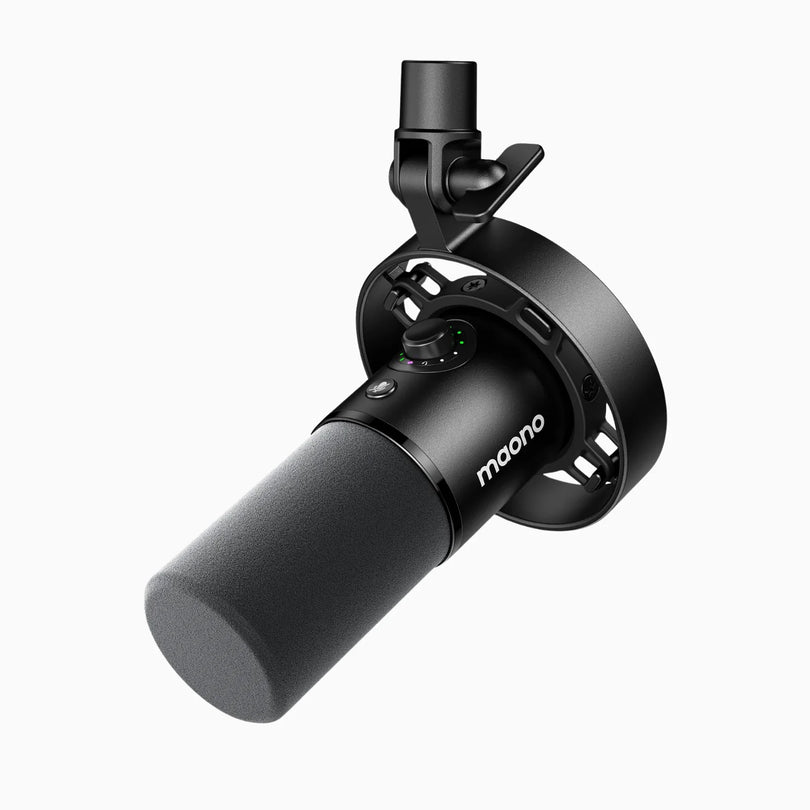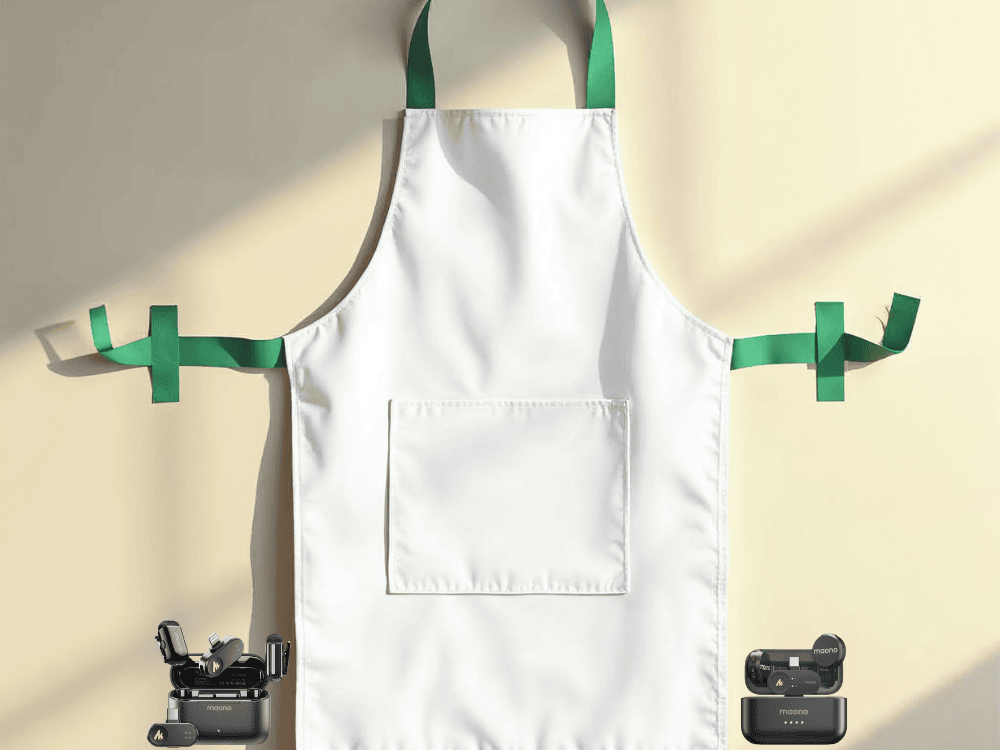After tedious days of intense workouts, we also need time to recover and rest our bodies. Box breathing helps return the body to a resting state after exercise, while also strengthening the diaphragm. If you’re someone who enjoys sharing your wellness journey online, capturing your breathing exercises clearly using a wireless microphone can enhance the experience for your viewers.
In today’s fast-paced world, stress and anxiety are all too common. Whether you’re dealing with work pressure, struggling to sleep, or just need a way to refocus during a busy day, learning to control your breath can be a powerful tool. One popular method known for its simplicity and effectiveness is box breathing.
But what exactly is box breathing?
Box breathing—also known as square breathing—is a simple yet effective breathing technique used to calm the mind, reduce stress, and improve focus. The name comes from its four-step breathing cycle, each lasting the same duration, forming a metaphorical "box":
-
Inhale (4 seconds)
-
Hold (4 seconds)
-
Exhale (4 seconds)
-
Hold (4 seconds)
This cycle can be repeated for several minutes, and the timing can be adjusted (e.g., 5 or 6 seconds) as you become more practiced.

What Is Box Breathing For?
Box breathing is widely used to regulate the autonomic nervous system, helping the body shift from the “fight or flight” response into a more relaxed and balanced state. It’s popular among athletes, first responders, and even Navy SEALs to maintain calm under pressure.
The History and Origin of Box Breathing
While breath control has roots in ancient practices such as pranayama (yogic breathing), the structured “box breathing” technique became more popular in recent years thanks to modern mindfulness movements. Navy SEAL Commander Mark Divine helped popularize the method in the West as part of mental toughness training, bringing this age-old practice to mainstream wellness and performance culture.
What Are the Mental Health Benefits of Box Breathing?
Box breathing is incredibly effective for managing stress, anxiety, and panic attacks. When we breathe in a controlled and rhythmic manner, it sends signals to the brain that we’re safe, which helps calm overactive thoughts and anxiety loops.
Mental health benefits include:
-
Reduced stress and anxiety
-
Improved focus and concentration
-
Better emotional regulation
-
Increased mindfulness
-
Greater resilience in high-pressure situations
Many therapists now incorporate box breathing into cognitive behavioral therapy (CBT) sessions for clients with anxiety and PTSD.
How Does Box Breathing Compare to Deep Breathing or Meditation?
Box breathing shares similarities with deep breathing and meditation but offers a more structured rhythm that appeals to beginners and those who find freeform meditation challenging.
Unlike deep breathing—where you simply inhale and exhale slowly—box breathing involves breath holds, which activate the parasympathetic nervous system more deeply. It’s also more practical than traditional meditation for those who want a fast, on-the-go method to regain control.
Box breathing is often seen as a stepping stone toward mindfulness meditation, offering tangible benefits even in short sessions.
Can I Use Box Breathing to Help Me Sleep Faster at Night?
Absolutely. Box breathing is one of the most effective techniques for calming the mind before bed. It slows your heart rate, reduces mental chatter, and prepares your body for rest.
Here’s how to use it before sleep:
-
Lie down in bed.
-
Close your eyes and focus on your breath.
-
Begin the 4-4-4-4 pattern (or extend each to 5 or 6 seconds if you’re comfortable).
-
Repeat for 3–5 minutes.
It can be especially helpful if you suffer from insomnia or frequently wake up during the night.
How Often Should I Practice Box Breathing to See Results?
For best results, consistency is key. You can begin with just 3–5 minutes a day and gradually increase to 10–15 minutes. Some people use box breathing multiple times a day—especially during stressful moments at work, before public speaking, or in traffic.
Even practicing it a few minutes before a workout, exam, or bedtime can yield immediate benefits.
What Physical Changes Happen in the Body During Box Breathing?
When you engage in box breathing, several physiological changes occur:
-
Heart rate slows down, promoting relaxation.
-
Blood pressure may decrease, reducing strain on the cardiovascular system.
-
Cortisol levels drop, helping reduce chronic stress.
-
Vagus nerve stimulation increases, promoting rest and digestion.
-
Oxygen exchange improves, which can enhance cognitive and physical performance.
Over time, these effects can improve your overall health and stress tolerance.
Can Box Breathing Lower Blood Pressure or Heart Rate?
Yes. Box breathing has been shown to have immediate effects on lowering both blood pressure and heart rate. This is due to the stimulation of the parasympathetic nervous system, often referred to as the “rest and digest” mode.
Those with high blood pressure may benefit from practicing box breathing daily as a complement to medical treatment (always consult your doctor first).
Can I Practice Box Breathing During a Workout or While Walking?
Definitely. Box breathing is versatile and can be practiced during:
-
Warm-up routines
-
Rest periods between sets
-
Low-intensity steady-state cardio
-
Walking meditations
Using box breathing during physical activity can improve focus, prevent overexertion, and help you stay mentally connected to your body. For example, during yoga or strength training, you can match your breath to your movements to improve form and concentration.
Does Box Breathing Increase Lung Capacity or Oxygen Intake?
Box breathing can enhance breath awareness and control, which over time may contribute to:
-
Improved lung capacity through full diaphragmatic breathing
-
Better oxygen efficiency, especially during exertion
-
Reduced shortness of breath during anxiety episodes or workouts
While it’s not a substitute for aerobic conditioning, regular practice helps you make more efficient use of the oxygen you breathe.
What Is Your Recommended Wireless Microphone If I Decide to Vlog My Workout and Show How I Do Box Breathing?
If you're planning to share your box breathing routine on YouTube, TikTok, or Instagram, clear audio is essential. Ambient noise in gyms or parks can ruin your content if your mic isn't up to the task.
We recommend the Maono Wave T5 as the best wireless microphone for vlogging during workouts or breathing tutorials. Here’s why:
-
Compact and discreet
Perfect for fitness content where bulky gear is impractical, especially when using a collar mic without wire.
-
Dual transmitter support
Great for interviews or instructor-student formats and ideal for duo formats or multi-angle recording with a collar mic with transmitter.
-
Clear 48kHz/24-bit audio quality
Captures every calming breath, making it a great digital lapel microphone.
-
Plug-and-play with smartphones or cameras
Compatible with iPhones, Android, DSLR, or PC.
-
Built-in wind protection and noise suppression
Crucial for outdoor vlogging, and comes with muff or windproof.
-
Long battery life
Up to 9 hours per use—valuable for extended shoots or live streams, especially if you're exploring cordless collar mic options.
If you're considering upgrading your gear, it's worth checking the cordless collar mic price to see how the Maono Wave T5 stacks up against others in performance and affordability. It strikes a balance between pro-level sound and accessible pricing.

Conclusion
Box breathing is more than a relaxation technique—it’s a powerful tool that supports mental clarity, physical health, and emotional stability. With roots in ancient practices and a proven track record among elite performers, box breathing is a simple yet transformative habit you can practice anywhere, anytime.
From reducing anxiety to improving sleep and even enhancing workout recovery, the benefits of box breathing are far-reaching. And if you’re planning to share your journey, don’t let poor audio ruin your content. Pairing your breathing practice with a reliable wireless microphone, such as the Maono Wave T5 or any other cordless collar mic, ensures your audience hears every calming breath with crystal clarity.
Start today with just five minutes. Breathe in. Hold. Breathe out. Hold. Repeat. Whether you're calming your mind or inspiring others through video, box breathing can help you show up as your most focused, grounded self.












